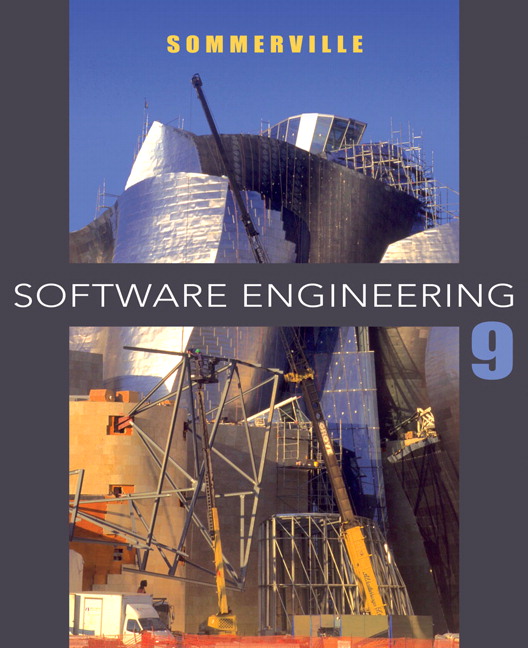SE 477 Software and Systems
Project Management
Useful Information
Table of Contents
- Text Book
- On-line articles, documents and references of Interest for Instructor and Students
- Web Pages of Interest
- Project Forms and Documents
- Student recommended readings
- Readings for the lectures
- Agile Project Management
Text Book
Required
Software Extension to the PMBOK® Guide, Fifth Edition, Project Management Institute, 2013 (291 pages), ISBN:9781628250138, available at <http://library.books24x7.com.ezproxy.depaul.edu/toc.aspx?site=XOBDU&bookid=62558>Deemer, P., Benefield, G., Larman, C., and B. Vodde (2012). The Scrum Primer: A Lightweight Guide to the Practice of Scrum, Version 2.0. Available at: http://www.infoq.com/minibooks/Scrum_Primer.
The definitive text book is:A
Guide to the Project Management Body of Knowledge ( PMBOK®
Guide )—Fifth Edition, Project Management Institute,
2013. ISBN:
9781935589679, available at <http://library.books24x7.com.ezproxy.depaul.edu/toc.aspx?site=XOBDU&bookid=51356>
[You don't have to buy this, you can use it on-line.]
You can access a textbook online at the DePaul Libraries Web site, http:/library.depaul.edu. [Electronic Books: Books 24x7: BusinessPro and Books 24x7: ITPro].
Recommended:
Material from the following sources is used in the course. All of these references are available online at the DePaul Libraries Web site, http://library.depaul.edu. [Electronic Books: Books 24x7: BusinessPro and Books 24x7: ITPro].- Practice Standard for Work
Breakdown Structures, Second Edition, Project
Management Institute, Project Management Institute,
2006. ISBN: 9781933890135 –
on-line
- Fundamentals of Project Management, Third Edition, James P. Lewis, AMACOM, 2007. ISBN: 9780814408797
- Information Systems Project Management: How to Deliver Function and Value in Information Technology Projects, Second Edition, Jolyon Hallows, AMACOM, 2005. ISBN: 9780814472736
- Managing Information Technology Projects: Applying Project Management Strategies to Software, Hardware, and Integration Initiatives, James Taylor, AMACOM, 2004. ISBN: 9780814408117
- A
Survival Guide for Project Managers, Second
Edition, James Taylor, Amacom, May 05, 2006, ISBN:
9780814408773
- PMP: Project Management Professional Exam Study Guide, 7th Edition, Kim Heldman, Wiley (Sybex), July 2013, ISBN: 978-1-118-53182-2 (my recommendation)
- Project Management: A
Systems Approach to Planning, Scheduling, and Controlling, 11th
Edition,
Harold
Kerzner, John Wiley & Sons, 2013. ISBN:
978-1118022276
The following text books contain useful information and are worth looking at:
 |
Roger Pressman, Software Engineering: A
Practitioner's Approach, 7th edition,
McGraw-Hill, 2010. ISBN: 978-0-07-337597-7 |
 |
Ian
Sommerville, Software Engineering,
9th Edition, Addison-Wesley, 2011, ISBN
0-13-703515-1. This is one of the top two undergraduate software engineering texts. |
Other books (worth reading)
These two books are ones that every practitioner in the field
ought to read. They are the defining books in the field and often
cited by others.
- Frederick P. Brooks, The Mythical Man-Month: Essays on Software Engineering, Anniversary Edition (2nd Edition) (Paperback), Addison-Wesley, ISBN-10: 0-201-83595-9.
- Gerald M. Weinberg, The Psychology of Computer Programming: Silver Anniversary Edition (Paperback), Dorset House, ISBN-10: 0-932633-42-0
Collection of References
- Software Project Management Resources -- Columbia University [Project management resources: templates, samples, articles, software, lecture notes on software & general PM.] Rather comprehensive collection of information and links.
- Project
Management Tips and Articles
Software Project Management Course by Bas de Baar
A set of web pages and a group of blogs on the subject.
The Microwave Way to Software Project Management is a free guide to help you get the hang of project management stuff in no-time. The entire course consists of seven chapters that are written especially for those who hate long and boring books.
The above was written some time ago. The author has now written a Project Management Book: Surprise! Now You’re A Software Project Manager, by Bas de Baar. You may read the Chapter 1 and if you really like it, you can buy the book [Hard copy or e-Book].
- Introduction
- Chapter 1: Mindset of the software project manager
- Chapter 2: Project Intake
- Chapter 3: Requirements determination
- Chapter 4: Requirements validation
- Chapter 5: Project Progress
- Chapter 6: Risk Management
- Chapter 7: The Bigger Picture